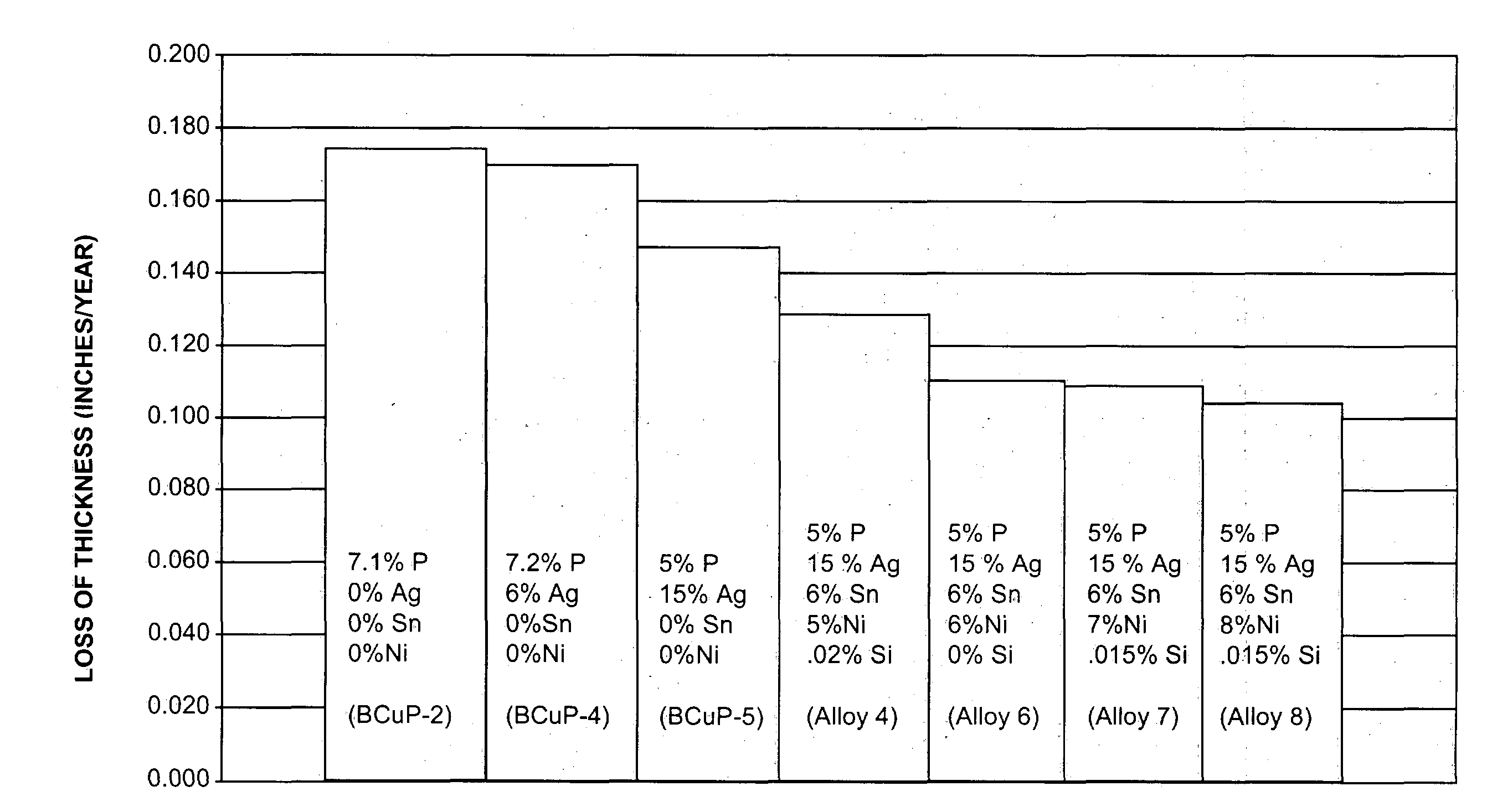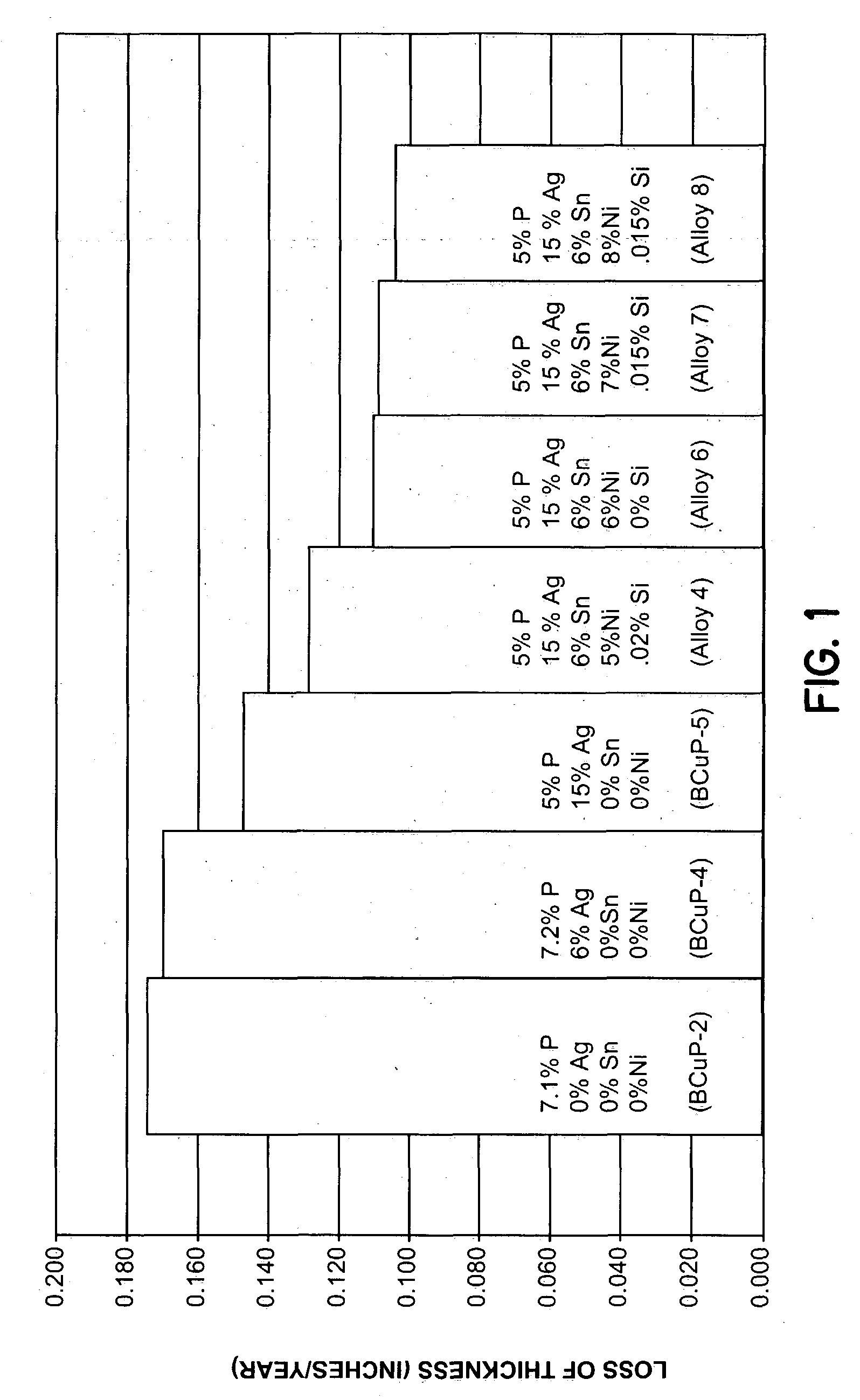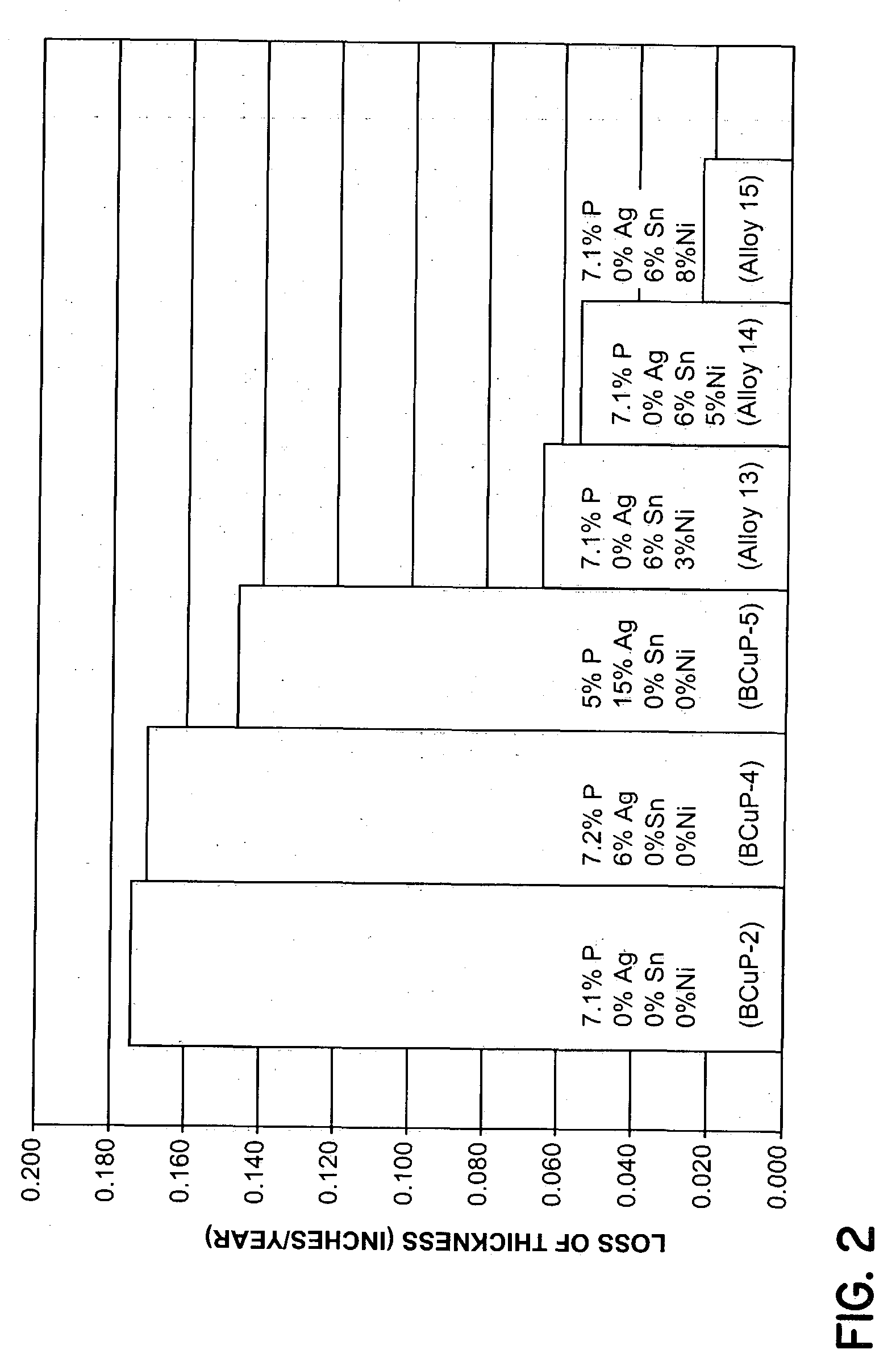Phosphorous-copper base brazing alloy
a technology of phosphorous copper and base brazing, which is applied in the direction of welding/cutting media/materials, manufacturing tools, and so on, can solve the problems of high cost of double brazing and testing, and damage to the company's brand image, so as to reduce the melting range of these brazing filler metals, reduce the time required of the brazing process, and reduce the use of expensive fuel gases
- Summary
- Abstract
- Description
- Claims
- Application Information
AI Technical Summary
Benefits of technology
Problems solved by technology
Method used
Image
Examples
Embodiment Construction
[0018] The present invention provides phos-copper base brazing alloys that are materially improved in their properties by the addition of specified amounts of tin and nickel, and further by specified additions of silicon and / or silver. The melting range can be lowered, narrowed or broadened. In other words, the specified alloy additions lower one or more of the liquidus, major thermal arrest (MTA) or solidus temperatures. As used herein, the liquidus temperature refers to that temperature at which the alloy is completely liquid, i.e. at which the alloy finishes melting upon heating. The solidus temperature refers to that temperature at which a metal is completely solid, i.e., at which the alloy begins to melt upon heating. Thus, the brazing temperature range extends from the solidus temperature to the liquidus temperature. The brazing temperature, or melting temperature at which the alloy wets and flows, is generally considered to be between the solidus and liquidus temperatures. So...
PUM
| Property | Measurement | Unit |
|---|---|---|
| liquidus temperature | aaaaa | aaaaa |
| solidus temperature | aaaaa | aaaaa |
| solidus temperature | aaaaa | aaaaa |
Abstract
Description
Claims
Application Information
 Login to View More
Login to View More - Generate Ideas
- Intellectual Property
- Life Sciences
- Materials
- Tech Scout
- Unparalleled Data Quality
- Higher Quality Content
- 60% Fewer Hallucinations
Browse by: Latest US Patents, China's latest patents, Technical Efficacy Thesaurus, Application Domain, Technology Topic, Popular Technical Reports.
© 2025 PatSnap. All rights reserved.Legal|Privacy policy|Modern Slavery Act Transparency Statement|Sitemap|About US| Contact US: help@patsnap.com



